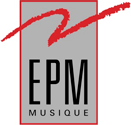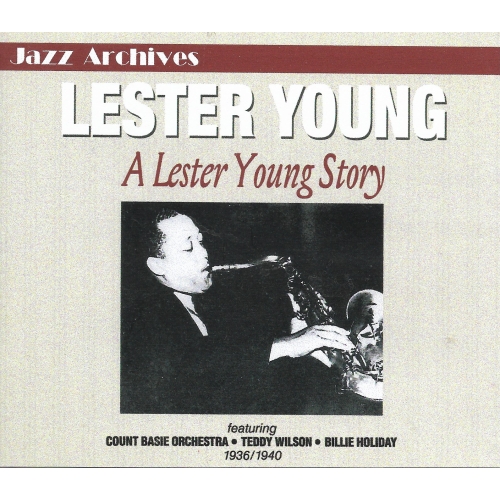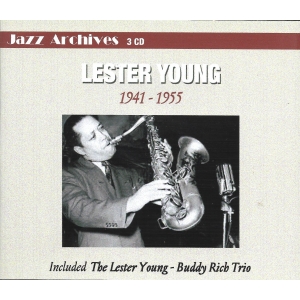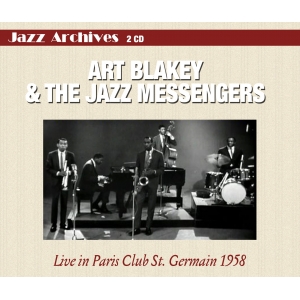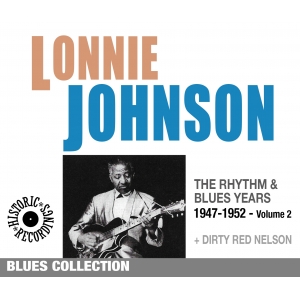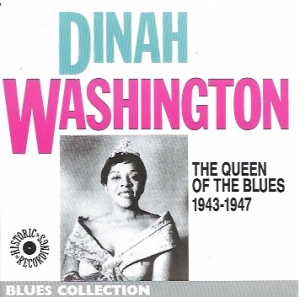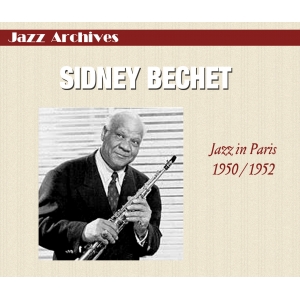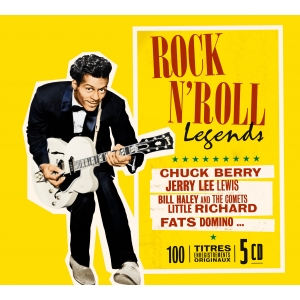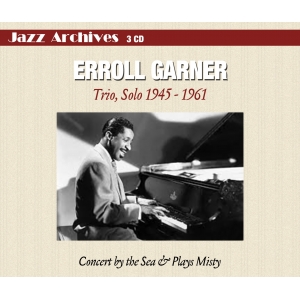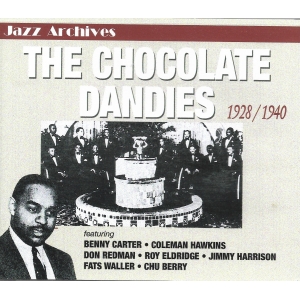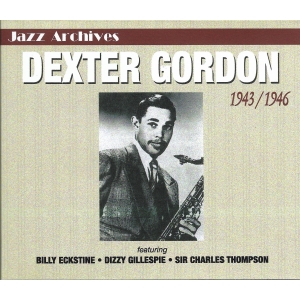Votre panier
Il n'y a plus d'articles dans votre panier
LESTER YOUNG / STORY
R303
8,00 €
TTC
1 CD - 22 TITRES / LESTER YOUNG / 1936-1940 / JAZZ ARCHIVES COLLECTION HISTORIC RECORDINGS
VOUS RECEVREZ UN BON D'ACHAT 10% À PARTIR DE 40 € DE COMMANDE
POUR VOIR LES VIDÉOS CLIQUEZ SUR LE BOUTON "VIDÉOS" CI-DESSUS
LESTER YOUNG STORY
1 Shoe shine boy
Cahn / Chaplin
Jones Smith Incorporated Orchestra
2 Oh ! Lady be good
G & I Gershwing
Jones Smith Incorporated Orchestra
3 Honeysuckle rose
T. Waller / A. Razaf
Count Basie Orchestra
4 Roseland shuffle
W. Basie
Count Basie Orchestra
5 Exactly like you
D. Fields / J. McHugh
Count Basie Orchestra
6 Time out
E. Durham / Fields
Count Basie Orchestra
7 I’ve found a new baby
J. Palmer / S. Williams
Teddy Wilson Orchestra
8 A sailboat in the moonlight
G. Lombardo / J. Loeb
Billie Holliday
9 Me myself and I
D.R.
Billie Holliday
10 Way down yonder in New Orleans
T. Layton / H. Creamer
The Kansas City Six
11 Countless blues
M. Gabler
The Kansas City Six
12 Swinging the blues
W. Basie
Count Basie Orchestra
13 Every tub
W. Basie
Count Basie Orchestra
14 Jumpin’ at the woodside
W. Basie
Count Basie Orchestra
15 If dreams come true
E. Sampson / B. Goodman / I. Mills
Teddy Wilson Orchestra
16 taxi war dance
W. Basie / L. Young
Count Basie Orchestra
17 Twelfth street rag
Summer / Bowman
Count Basie Orchestra
18 Dickie’s dream
W. Basie / L. Young
Count Basie Kansas City Seven
19 Lester leaps in
L. Young
Count Basie Kansas City Seven
20 I never knew
G. Kahn / T. Fio Rito
Count Basie Orchestra
LESTER YOUNG STORY
1 Shoe shine boy
Cahn / Chaplin
Jones Smith Incorporated Orchestra
2 Oh ! Lady be good
G & I Gershwing
Jones Smith Incorporated Orchestra
3 Honeysuckle rose
T. Waller / A. Razaf
Count Basie Orchestra
4 Roseland shuffle
W. Basie
Count Basie Orchestra
5 Exactly like you
D. Fields / J. McHugh
Count Basie Orchestra
6 Time out
E. Durham / Fields
Count Basie Orchestra
7 I’ve found a new baby
J. Palmer / S. Williams
Teddy Wilson Orchestra
8 A sailboat in the moonlight
G. Lombardo / J. Loeb
Billie Holliday
9 Me myself and I
D.R.
Billie Holliday
10 Way down yonder in New Orleans
T. Layton / H. Creamer
The Kansas City Six
11 Countless blues
M. Gabler
The Kansas City Six
12 Swinging the blues
W. Basie
Count Basie Orchestra
13 Every tub
W. Basie
Count Basie Orchestra
14 Jumpin’ at the woodside
W. Basie
Count Basie Orchestra
15 If dreams come true
E. Sampson / B. Goodman / I. Mills
Teddy Wilson Orchestra
16 taxi war dance
W. Basie / L. Young
Count Basie Orchestra
17 Twelfth street rag
Summer / Bowman
Count Basie Orchestra
18 Dickie’s dream
W. Basie / L. Young
Count Basie Kansas City Seven
19 Lester leaps in
L. Young
Count Basie Kansas City Seven
20 I never knew
G. Kahn / T. Fio Rito
Count Basie Orchestra
21 Tickle toe
L. Young
Count Basie Orchestra
22 The world is mad
Count Basie Orchestra
W. Basie
Au Panthéon des musiciens de jazz, de grands noms sont considérés comme des Maîtres.
Ils furent de remarquables solistes, créérent un style original, personnel, et marquèrent leur génération d'une manière indélébile.
Plus tard, ils firent école, eurent des "élèves", des suiveurs sinon des imitateurs. Louis Armstrong (1901-1971) et sa trompette fulgurante, impériale, bien sûr. Charlie Parker (1920-1955) avec son alto audacieux, aventureux casse-cou. Coleman Hawkins (1904-1969) avec son ténor à la sonorité de bronze, ordonnant une sensualité réfléchie; on lui attribua le titre "d'inventeur" du saxophone, révérence gardée envers Adolphe Sax (1814-1894) son père légitime. Art Tatum (1909-1956) qui à lui seul jouait du piano à quatre mains, suivant un labyrinthe de phrases pleines d'inventions tout comme la guitare éphémère de Charlie Christian (1919-1942) et celle de Django Reinhardt (1910-1953) qui n'ont pas encore fini de résonner. Et la liste peut se poursuivre.
Toutes ces sources fertiles alimentent aujourd'hui encore le talent de nombreux musiciens du jazz le plus authentique.
Lester Willis Young (1909-1959) est du nombre de ces Maîtres. Il fut le Président -"Prez"- d'une véritable révolution de l'expression musicale sur la saxophone ténor par une conception radicalement différente de celle pratiquée par ses confrères qui ne furent certes pas ses rivaux. Ils furent simplement différents. Sans employer d'adjectifs, trop souvent subjectifs, restant dans le concret, il est flagrant que sa sonorité, sa construction, son phrasé sont uniques. Cela le fait reconnaître dès la première mesure d'un solo qu'il déploie généreusement même s'il ne comporte que huit mesures.
Dans un entretien qu'il accorda à François Postif, en 1959, cinq semaines avant sa disparition, Lester Young déclare : "I Try Not To Be A Repeater Pencil" ("J'essaye de ne pas être un crayon à répétition"). Sous entendu : "Lorsque je m'exprime". Il suffit de l'écouter pour avoir la confirmation de la justesse du propos. C'est grand dommage que les premières traces tangibles du talent de Lester Young n'apparaissent qu'en 1936. Il est alors au sein de la formation naissante de Count Basie. Jusqu'en 1940 il y laissera de bien grands moments, comme autant de repères fixés par un géant fragile, d'un autre monde. Dans l'orchestre il se révéle plus soliste qu' homme de pupitre... encore que...
L'évidence se fait jour lorsque Lester Young prend part aux enregistements de Billie Holiday réalisés avec la formation restreinte de Teddy Wilson durant la même période.
Là encore plusieurs instants de grâce demeurent en témoignages intangibles.
La suite des années quarante, Lester Young libéré des astreintes du cadre de l'orchestre, sera un épanouissement total pour son art. C'est elle qui ici nous intéresse.
Sans entrer dans les détails, qui pour autant n'en sont point négligeables, de purs joyaux vont naître au cours des sessions enregistrées en compagnie de Dickie Wells, des Kansas City Seven et Six et avec le quartette que Lester Young a réuni.
Ce disque nous offre aussi une tentative, car non prévue pour la publication à l'origine, d'interprétations en trio comprenant Nat "King" Cole au piano et Red Callender à la contrebasse. La date de gravure est plus qu'incertaine et les conditions d'un enregistrement optimum plus qu'aléatoires.
De la séance réalisée sous le nom de Dickie Wells, I Got Rhythm est sans conteste la pièce maîtresse, du moins pour Lester Young s'octroyant quatre chorus particulièrement inspirés. On peut dire qu'il est "completely gone", complètement parti jusqu'à ce que la pièce s'achève après quatre minutes et quelques secondes de bonheur.
De la séance réalisée en quartette où brillent également le bassiste fredonnant Slam Stewart, le batteur Sidney Catlett et le pianiste Johnny Guarnieri, I Never Knew et Afternoon Of A Basie-ite, hommage à Count Basie, sont les meilleurs instants pour ne citer que les points forts de cette rencontre.
La séance des Kansas City Seven est totalement remarquable tant pour Lester Young que pour son entourage. Notons que Count Basie est présent mais qu'étant sous contrat avec une autre firme productrice il dut utiliser le pseudonyme de "Prince Charming" pour l'occasion.
La séance des Kansas City Six est, elle aussi, très significative du style naturellement inspiré et décontracté dont Lester Young fut le créateur. "Cool" avant la lettre, en quelque sorte. Cela ne sera pas sans suites.
Jacques Lubin
En bonus on trouvera, ouvrant le disque, un enregistrement peu connu du petit ensemble réuni par le pianiste Sammy Price auquel Lester Young apporte le charme de son élégance spontanée.
In the pantheon of jazz, the great instrumentalists are considered masters. They were remarkable soloists, they created an original, highly personal style and they left their indelible mark on a whole generation of music. In addition to which, they all had their disciples, some of whom simply copied, while others were content to derive their inspiration. Among such eminently influential figures, the first that springs to mind is Louis Armstrong (1901-1971), that brilliant trumpeter who influenced the whole of jazz history. But think, too, of Coleman Hawkins (1904-1969), the bronze-toned tenor often referred to as “the father of the tenor-saxophone”; Charlie Parker (1920-1955), the audacious alto-saxophonist one of the founding spirits of bebop; Art Tatum (1909-1956), an unrivalled virtuoso prepared to take on other pianists with one hand behind his back; and guitar geniuses Charlie Christian (1919-1942) and Django Reinhardt (1910-1953), without whom jazz guitar would not exist as we today know it. All these sources, and so many more, continue to nurture the jazz music of this closing decade of our 20th century.
Lester Willis Young (1909-1959) is another such master. He was the President — “Prez” — of a veritable revolution in jazz tenor-saxophone playing, introducing a style so different that his tenor colleagues could not even be considered rivals. Adjectives tend to be too subjective to describe adequately the Lester Young sound, so let us be content to say simply that his tone and phrasing were unique. As we listen to him today, Lester is recognisable from the very first notes; moreover, give him just eight bars to have his say, and he says it all.
In an interview with French journalist François Postif in 1959, just five weeks before his death, Lester declared: “I try not to be a repeater pencil.” Just listening to his playing, one becomes immediately aware of what he meant. What a pity the earliest tangible traces of the Lester Young talent date from as late as 1936, by which time he was already member of the nascent Count Basie orchestra. From then until 1940, he would contribute much remarkable work as one of Basie’s men, laying down his musical milestones like a fragile giant from another world.
Lester, we tend to think, was above all a soloist, and yet he was, too, an excellent section man and a top-class accompanist. For proof of the latter, we need only listen to his recordings from this same period with Billie Holiday, when Lester was just one distinguished voice of a little Teddy Wilson band that produced some of the most inspired moments in jazz.
When Prez freed himself of his big-band chores by leaving Basie in 1940, he sought to expand his range of expression, and those early years out on his own are the ones that occupy us here. Following a little-known side with pianist Sammy Price’s Bluesicians, to which Lester brings all the charm of his spontaneous elegance, we find two cuts not originally intended for release, on which Prez experiments with the drum-less trio format in the company of pianist Nat King Cole and bassist Red Callender. Recording conditions on this fascinating session turn out to be as uncertain as the date on which it all took place.
The sessions by the “Kansas City” groups, the Dicky Wells outfit and Lester’s own quartet offer us some pure gems. The outstanding item from the Dicky Wells date is undoubtedly I Got Rhythm, at least as far as Lester is concerned: “completely gone”, he contributes four particularly inspired choruses to a piece that lasts over four wonderful minutes. Among the finest of many fine moments on Young’s own quartet date — on which Lester enjoys the magnificent support of pianist Johnny Guarnieri, that humming bassist, Slam Stewart, and drummer Sidney Catlett — are I Never Knew and Afternoon Of A Basie-ite, but the rest is hardly negligible either!
The Kansas City Seven session is absolutely remarkable, whether for the playing of Lester himself or of the rest of this exceptional group. The pianist here is Count Basie, as shown, despite the fact that, for contractual reasons, the original labels listed him as Prince Charming! The Kansas City Six get-together of just six days later reveals all the laid-back inspiration and natural relaxation of which Lester was both creator and master — the very definition, in music, of that subsequently so significant term, “cool”.
Adapted from the French by Don Waterhouse
